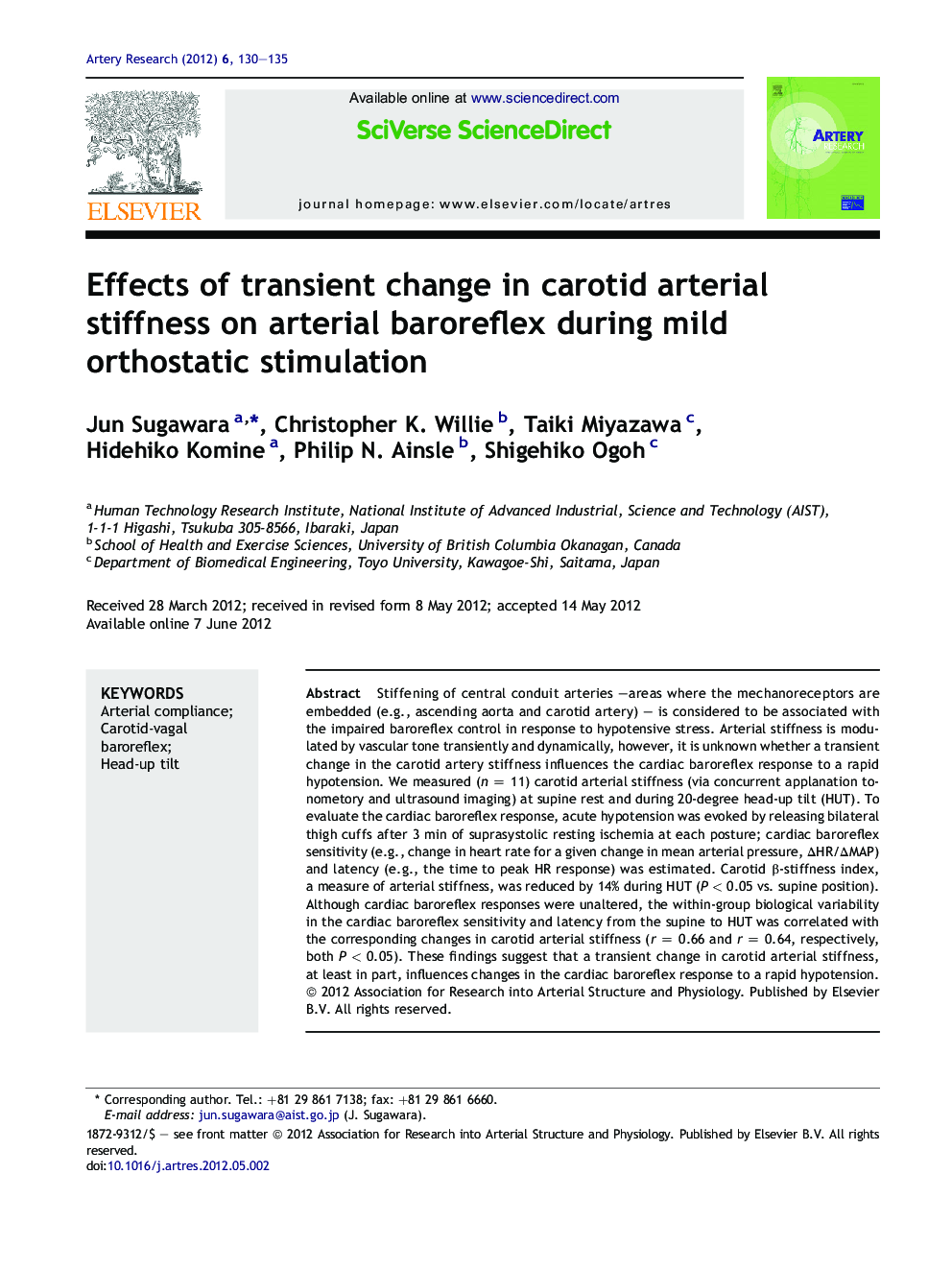| Article ID | Journal | Published Year | Pages | File Type |
|---|---|---|---|---|
| 2891899 | Artery Research | 2012 | 6 Pages |
Abstract
Stiffening of central conduit arteries -areas where the mechanoreceptors are embedded (e.g., ascending aorta and carotid artery) - is considered to be associated with the impaired baroreflex control in response to hypotensive stress. Arterial stiffness is modulated by vascular tone transiently and dynamically, however, it is unknown whether a transient change in the carotid artery stiffness influences the cardiac baroreflex response to a rapid hypotension. We measured (n = 11) carotid arterial stiffness (via concurrent applanation tonometory and ultrasound imaging) at supine rest and during 20-degree head-up tilt (HUT). To evaluate the cardiac baroreflex response, acute hypotension was evoked by releasing bilateral thigh cuffs after 3 min of suprasystolic resting ischemia at each posture; cardiac baroreflex sensitivity (e.g., change in heart rate for a given change in mean arterial pressure, ÎHR/ÎMAP) and latency (e.g., the time to peak HR response) was estimated. Carotid β-stiffness index, a measure of arterial stiffness, was reduced by 14% during HUT (P < 0.05 vs. supine position). Although cardiac baroreflex responses were unaltered, the within-group biological variability in the cardiac baroreflex sensitivity and latency from the supine to HUT was correlated with the corresponding changes in carotid arterial stiffness (r = 0.66 and r = 0.64, respectively, both P < 0.05). These findings suggest that a transient change in carotid arterial stiffness, at least in part, influences changes in the cardiac baroreflex response to a rapid hypotension.
Keywords
Related Topics
Health Sciences
Medicine and Dentistry
Cardiology and Cardiovascular Medicine
Authors
Jun Sugawara, Christopher K. Willie, Taiki Miyazawa, Hidehiko Komine, Philip N. Ainsle, Shigehiko Ogoh,
